
PENDLE
Pendle 价格
$4.0100
+$0.12000
(+3.08%)
过去 24 小时的价格变化

您感觉 PENDLE 今天会涨还是会跌?
您可以通过点赞或点踩来分享对该币种今天的涨跌预测
投票并查看结果
PENDLE 发行人风险
请采取一切预防措施,并注意此加密资产被归类为高风险加密资产。此加密资产缺乏明确可识别的发行人或/和成熟的项目方,这会增加或可能增加其面临重大市场风险的可能性,包括但不限于极端波动性、低流动性或/和市场滥用或价格操纵的可能性。无法绝对保证此加密资产的价值、稳定性或以优惠或理想价格出售的能力。
免责声明
本页面的社交内容 (包括由 LunarCrush 提供支持的推文和社交统计数据) 均来自第三方,并按“原样”提供,仅供参考。本文内容不代表对任何数字货币或投资的认可或推荐,也未获得欧易授权或撰写,也不代表我们的观点。我们不保证所显示的用户生成内容的准确性或可靠性。本文不应被解释为财务或投资建议。在做出投资决策之前,评估您的投资经验、财务状况、投资目标和风险承受能力并咨询独立财务顾问至关重要。过去的表现并不代表未来的结果。您的投资价值可能会波动,您可能无法收回您投资的金额。您对自己的投资选择自行承担全部责任,我们对因使用本信息而造成的任何损失或损害不承担任何责任。提供外部网站链接是为了用户方便,并不意味着对其内容的认可或控制。
请参阅我们的 使用条款 和 风险警告,了解更多详情。通过使用第三方网站(“第三方网站”),您同意对第三方网站的任何使用均受第三方网站条款的约束和管辖。除非书面明确说明,否则欧易及其关联方(“OKX”)与第三方网站的所有者或运营商没有任何关联。您同意欧易对您使用第三方网站而产生的任何损失、损害和任何其他后果不承担任何责任。请注意,使用第三方网站可能会导致您的资产损失或贬值。本产品可能无法在所有司法管辖区提供或适用。
请参阅我们的 使用条款 和 风险警告,了解更多详情。通过使用第三方网站(“第三方网站”),您同意对第三方网站的任何使用均受第三方网站条款的约束和管辖。除非书面明确说明,否则欧易及其关联方(“OKX”)与第三方网站的所有者或运营商没有任何关联。您同意欧易对您使用第三方网站而产生的任何损失、损害和任何其他后果不承担任何责任。请注意,使用第三方网站可能会导致您的资产损失或贬值。本产品可能无法在所有司法管辖区提供或适用。
Pendle 市场信息
市值
市值是通过流通总应量与最新价格相乘进行计算。市值 = 当前流通量 × 最新价
流通总量
目前该代币在市场流通的数量
市值排行
该资产的市值排名
历史最高价
该代币在交易历史中的最高价格
历史最低价
该代币在交易历史中的最低价格
24 小时最高
$4.0400
24 小时最低
$3.8540
历史最高价
$7.1420
-43.86% (-$3.1320)
最后更新日期:2024年12月7日
历史最低价
$1.8130
+121.18% (+$2.1970)
最后更新日期:2025年3月11日
Pendle 动态资讯
以下内容源自 。

冰蛙
《Gaib:错过英伟达股票?这次你可以直接买它的“链上GPU股票”》
一句话总结:极度看好GAIB ,可能是未来的链上“算力淘宝”。(非广)
__________________
一、一句话讲清楚Gaib是做什么的
GAIB(GPU-AI-Blockchain Infrastructure),用项目官方白皮书表达,就是全球首个专注于将GPU算力资产转化为可交易金融工具的经济协议,通过区块链释放万亿美元规模的AI计算市场价值。
其核心创新在于构建“AI合成美元AID”,一种由实体GPU资产现金流支撑的收益型稳定币,并围绕AID建立完整的DeFi生态,连接链下算力资源与链上流动性。
用一句话通俗表达其商业模式:用户用USDC铸造AID,然后投资GPU,AI企业用这些GPU干活产生现金流,GAIB定期分红,用户持有sAID即可享受这份收益,还能拿去参与其他DeFi赚钱。
_________________
二、这个事情为什么可行?能赚钱吗?
在AI时代,GPU无疑是最核心的“硬通货”。据不完全统计,到2025年,全球科技巨头在GPU算力上的总投入将超过3000亿美元。以英伟达H100/GB200为例,单颗芯片价格接近3-5万美元,建设一个具备AI训练能力的数据中心,动辄需要数十亿乃至上百亿美元的投入。因此也诞生了以下问题以及Gaib的解法。
1、需求端:AI爆发叠加“供需不对称”
目前的大模型训练市场几乎由少数科技巨头垄断,GPU资源集中在OpenAI、Google、Meta等超大机构手中。但进入2024下半年年以后,我们看到AI应用出现百花齐放的趋势,尤其是在推理端和AI Agent垂直场景。这些创新型项目虽不需要自建数百亿级别的数据中心,但同样需要大量高性能GPU资源。
问题在于:传统数据中心或云服务商无法灵活响应这些中小需求,导致算力市场出现严重的结构性错配——资源集中而需求分散,供需极度非对称,需求远大于供给。
2、金融侧:传统融资路径不支持“算力资产”
理论上,这些高价值GPU集群完全可以作为融资资产。但在现实中,GPU并不被传统银行视为“可抵押标准资产”,也难以被切分或标准化,导致传统金融系统几乎无法覆盖算力融资需求。
目前传统市场已有一些算力租赁平台,试图解决这一痛点,但普遍存在两大问题:
一是无法拆分所有权,融资流动性差;
二是无标准化机制,收益结构不透明,参与门槛高。
3、Gaib的解法:链上“算力金融市场 + 算力稳定币”
Gaib 的创新之处在于,它不是单纯做算力租赁,而是在链上创建一个高效流动的算力金融市场
1)将企业级GPU的未来收益进行代币化,实现拆分交易;
2)构建由真实GPU资产现金流支持的收益型稳定币AID,可用于质押、借贷、组合收益策略;
3)利用DeFi生态,让这些资产在全球范围内高效融资、自由流通。
这一机制的核心价值有三点:
1)对GPU提供方,为GPU持有者提供了前所未有的融资渠道;
2)对参与用户,为DeFi用户提供了安全、真实、收益可见的新型资产;
3)对开发者,为中小开发者打开了公平参与底层基础设施的通道。
换句话说,Gaib 把“算力”变成了可组合、可配置的金融资产,真正实现了算力的资本化。
我们如果说英伟达是AI时代做“卖铲子”的王者,那么Gaib想做的就是在英伟达的铲子帝国上再建一座“铲子银行/铲子交易所”,把实体铲子变成可交易的“算力股票”。
__________________
三、Gaib具体怎么帮你赚钱?玩法拆解
1、 链下资产端:三类模式下的GPU融资资产包
GAIB通过与全球顶级云/数据中心合作,围绕GPU部署构建三类协议交易结构:
上述所有交易均由实体GPU作为超额抵押,设置破产隔离结构,一旦违约可清算或转由战略合作方继续托管运营。
2、链上架构:AID稳定币体系
GAIB将GPU融资交易组合代币化,发行 AID(AI Dollar),一种由链下收益资产支持的稳定币:
1)AID:并非普通稳定币,它不仅对标美元价值,还代表真实GPU收益权;
2)sAID:用户质押AID获得的收益型凭证,可自动积累收益;
3)底层收益来自:GPU交易包的现金流+国债储备,构成支持系统;
4)机制设计:AID铸造与销毁机制,保证其与真实资产价值锚定;
5)退出机制:白名单用户可1:1赎回,普通用户可通过AMM池换回稳定币。
此外,sAID还可以还可以参与借贷、流动性挖矿、收益衍生品各类Defi玩法(已经与主流的dex - Curve, AEVO, Uniswap; Pendle等打通),相当于直接从GPU底层资产到链上Defi全线打通。
单纯从收益角度,底层收益+Defi收益+积分收益等,即便以最基础的债权模式,最高收益可能也会到40%往上。
__________________
四、参与机会分析?风险在哪里?项目如何规避?
2025年初,项目与去中心化GPU平台Aethir展开试点,10分钟内完成10万美元代币化融资试点,证明市场需求强劲;所募资金用于支持实体GPU集群,投资者已开始获取回报。
这标志着GAIB“GPU资产代币化”的模式已经跑通,具备了复制和规模化的基础。
从项目角度,传统RWA产品多以国债代币化切入,年化收益基本在4%-5%;GAIB项目底层的基础收益高达10%以上,从融资期限覆盖从3个月-3年,但从现实角度说来,由于GPU需求旺盛,一般融资期限会更短,周转速度更快。
从风险角度,主要存在底层资产的信用风险、AID的流动性风险等。最关键的还是底层资产的信用风险。GAIB 及其平台上的其他合作承销商会遵循完善的信用分析要求,并在有需要情况下与第三方审计机构合作。
每笔贷款均由实体GPU及其相关服务合同提供超额抵押。此外,这些GPU数据也会实时在去中心化网络显现。
如果发生违约,承销商有权清算 GPU以保护投资者,或通过战略数据中心合作伙伴继续托管和管理 GPU,确保持续创收。至少从机制上尽量规避最底层资产发生风险。
在具体参与上,如果是白名单用户(通过kyc用户),可以直接可1:1 USDC铸造AID参与项目并叠加Defi收益。
如果是非白名单则可以直接通过流动性池兑换AID。目前也可以加入项目的AID候补名单,正在排队中,对与LP,项目会有Points / Token 来激励,也会联合Dex联合激励。
__________________
五、总结和展望:价值远不止一个收益型稳定币
GAIB并不是一个单纯的“收益型稳定币”项目,它正在以DeFi的方式重构AI时代的资本市场基础设施。
去年底,GAIB完成由 Hack VC 领投的500万美元 Pre-Seed 融资,参投方还包括 Animoca、Aethir、Near 基金会等知名机构。
从投资方阵容来看,不难发现 GAIB 正站在风口浪尖上。特别是 Hack VC,作为押中多个顶级项目的机构,它的背书本身就是市场趋势的风向标。
值得一提的是,从团队阵容来讲,项目Co-Founder Alex Yeh自身也是Realtek (全球七大芯片公司之一,上市公司)的创始人,以及旗下云公司GMI Cloud更是英伟达的合作伙伴,创始人的这些资源和对产业的理解能力是确保这个项目能够良性运转和成功的重要前提。
GAIB 所推动的并不是某个“高收益产品”或者“稳定币协议”,而是一个全新的范式:
它连接了AI的基础设施和全球资金池,以GPU现金流作为锚定资产,将沉睡在数据中心里的“死资产”转化为可交易、可组合、可流动的金融资产。
它通过AID这种新型“收益型美元”,让任何人都可以参与AI算力市场——不用懂AI、不用买芯片、也不用部署节点,每天“链上收租”即可。
它正在为AI基础设施提供一个无需许可、全球化、公开透明的融资通道,让投资者与算力供给者直接对接,不再依赖中介或中心化主导的资源分配。
未来,如果AID能够真正成为AI时代的“货币”——像美元之于工业时代那样,承担流通、结算与定价的功能,那它所撬动的就不只是一个DeFi子赛道,而是AI经济的金融中枢。
我们甚至可以这样比喻:GAIB 就像是链上的“算力淘宝”——AI公司来“开店”(抵押显卡融资),投资者来“购物”(买入算力现金流资产),平台负责撮合与交易清算。
这种模式的想象空间,将远远超越一个“收益稳定币”的故事,而是走向AI金融新范式的基础设施级角色。
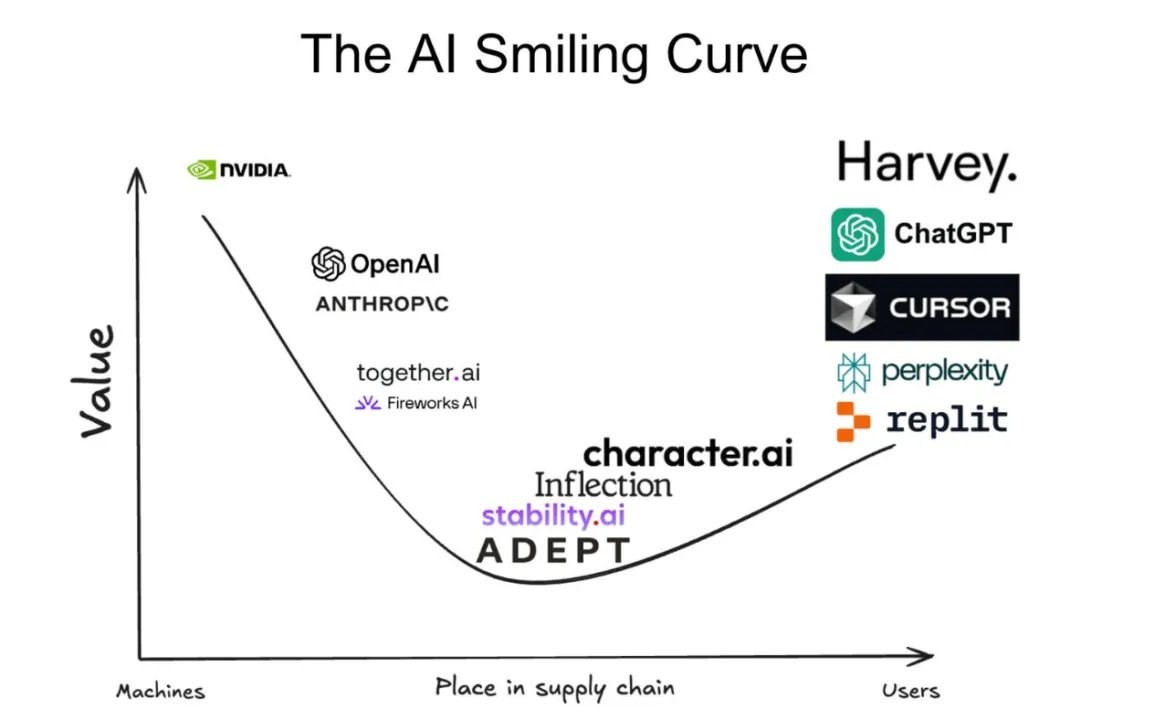

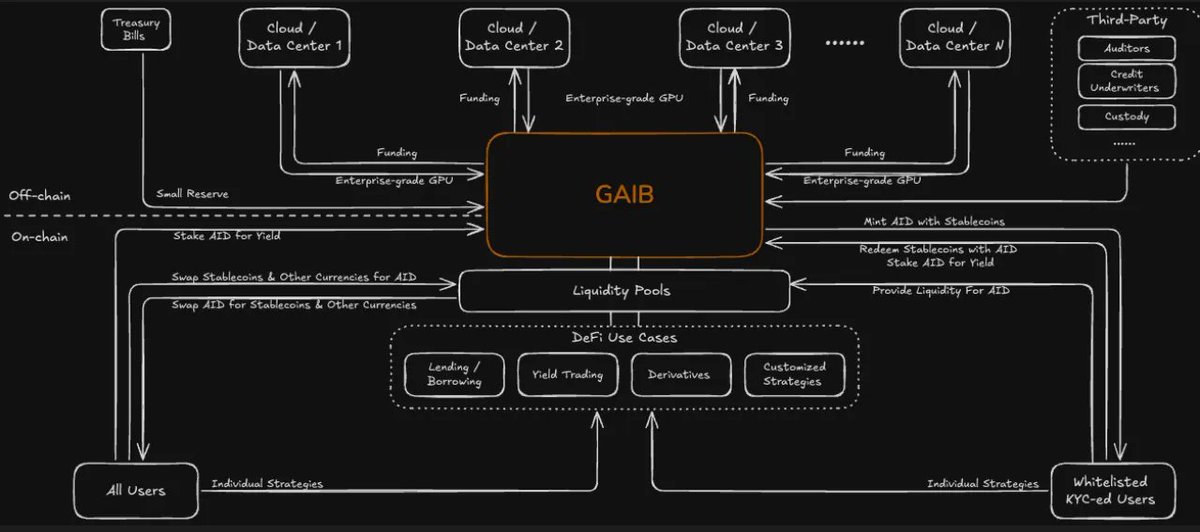
5.63万
71

alvin617.eth 🐻⛓️ 已转发

alvin617.eth 🐻⛓️
快速理解 DeFi App @defidotapp
ETH 从 1300 的底部迅速上涨到接近 3000 的现在,DeFi 强势币种不可或缺
包括 $AAVE $ETHFI $PENDLE 近期都有不错的表现
如果让我预测后续将会火热的叙事,提升跨链操作性的 DeFi 会是首选
阿嬤都能用、上 Tiktok,这些关键词在以前是不太可能和 DeFi 有所关联的,DeFi App @defidotapp 做到了
如果要我简单一句话形容 DeFi App
长辈也会用师奶杀手级 DeFi
项目的 slogan 也很有意思,Robinhood of Crypto
从品牌到产品的设计,可以看出团队的野心无非就是专注在
「让 DeFi 的一切使用更加简单」这件事
其实光是他们的网页设计就很有巧思,一次让你知道他们的优势在哪
💡加入 AI 元素提升用户体验,降低学习门槛
💡可直接使用刷卡入金,memecoin 有 moonshot,DeFi 有 DeFi App
💡无需 KYC,自托管资金,这也是现在很多主打客户端 DeFi 应用的趋势之意,或是使用 Passkey 的其实也越来越多了
团队使用的 Smart Account 技术,架构与 Coinbase Custody 是同一个团队打造的,Smart Account 刚好也是 Pectra 升级的核心元素之一
EIP-7702 引入账户抽象化,让普通钱包(EOA)能像智能合约一样运作,能够触发许多过去想象不到的使用场景
💡可质押、可借贷、可开合约的一站式金融服务平台
看完这些叙述之后不难理解团 slogan 提及 Robinhood 的原因
DeFi 何时会开始主流化?
前阵子让我感兴趣的还有看到他们发了这条推文,即将进攻 tiktok?
说真的我们做 Instagram 起家到现在也超过 5 年时间了
非常清楚 DeFi 在圈外用户多的平台多难介绍 😂
AMM , perpdex, 无偿损失, 利率交易是几部影片都说不完的
现在看到有这样的团队试着利用一些简单粗暴的形式把更多玩家带进来币圈固然是乐见其成
开始让我觉得 DeFi app 成功机率提升的一点也是和 @HyperliquidX 的整合
可以发现现在有越多越多应用的交易终端是接入 Hyperliquid,包括 @AxiomExchange 也是
我认为未来要做这类型的应用无非是要朝着
一次做到降低手续费、提升用户资金使用效率、降低用户门槛这三件事来打造应用
接着说说投资人的部分,我觉得也是比较少人着墨的
常见的除了 @MechanismCap , @SeliniCapital Kaito 也有互动),海外 KOL @SmallCapScience , @dcfgod , @Pentosh1 还有 @LayerZero_Fndn
明星投资人 The Network State 的 @balajis 以及 @FOMO_v ,可以说是各个角色都有,很齐全
在这边也稍微提一下许多人没提及的小 alpha ,大家常见的中文大家长 @yueya_eth 本身也是 Fomo Venures 的 LP 之一,算是一个小彩蛋了
在这也分享其他团队成员的 twitter account
@0xUxDesign @ajdinkahrovic @doranmaul @bigironchris
我们团队 @CryptoWesearch 其实早在 3 月就写过介绍了,有兴趣看更多的详见留言 👇
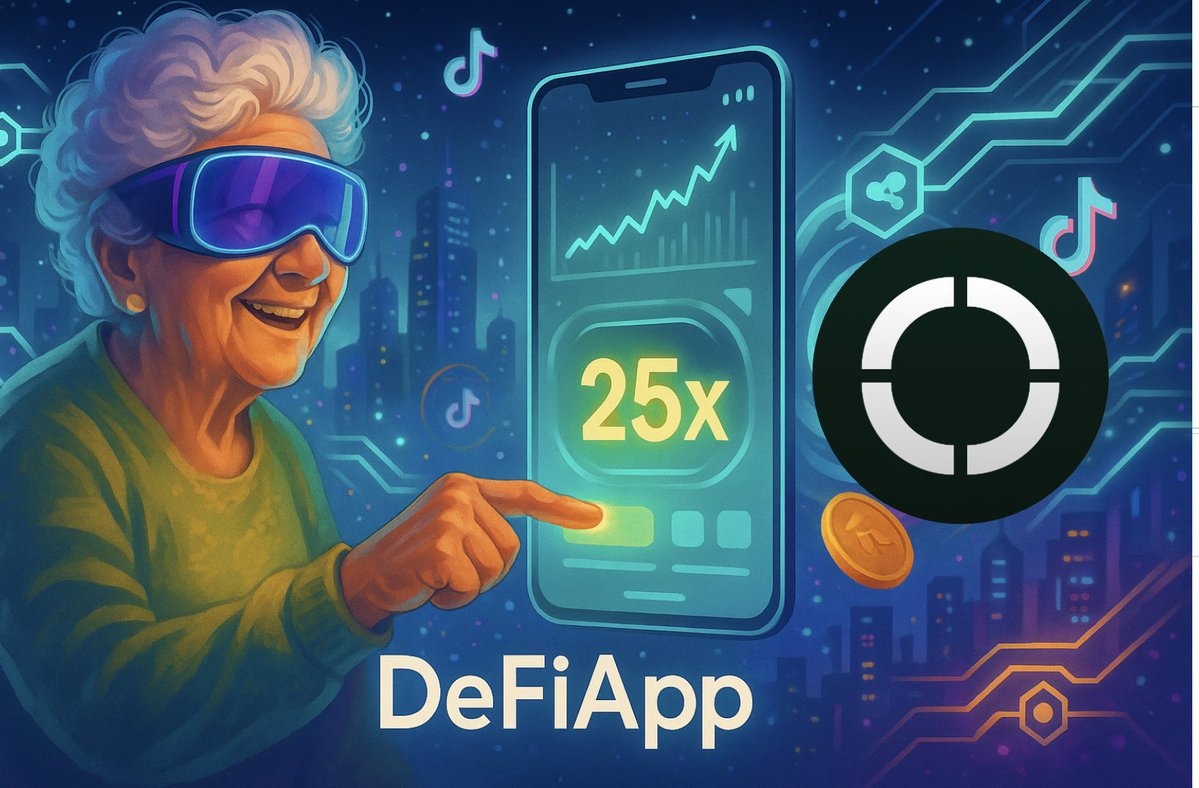
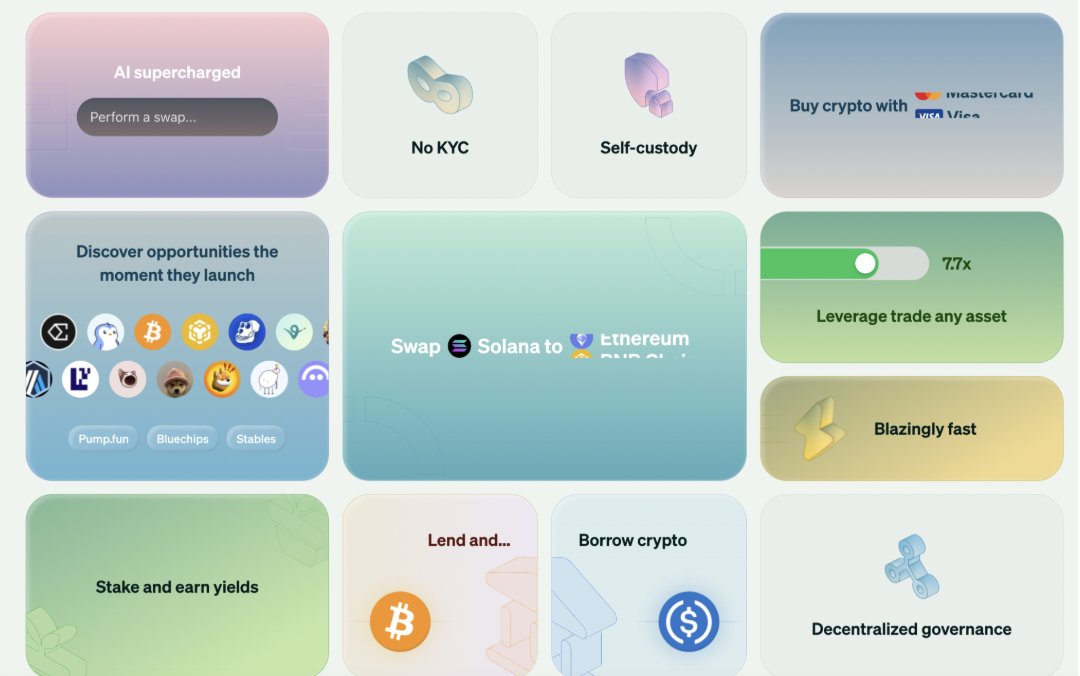


1.91万
87
PENDLE 计算器


Pendle 价格表现 (美元)
Pendle 当前价格为 $4.0100。Pendle 的价格在过去 24 小时内上涨了 +3.08%。目前,Pendle 市值排名为第 0 名,实时市值为 $6.50亿,流通供应量为 162,250,328 PENDLE,最大供应量为 281,527,448 PENDLE。我们会实时更新 Pendle/USD 的价格。
今日
+$0.12000
+3.08%
7 天
+$0.14200
+3.67%
30 天
+$0.88000
+28.11%
3 个月
+$0.56400
+16.36%
关于 Pendle (PENDLE)
此评级是欧易从不同来源收集的汇总评级,仅供一般参考。欧易不保证评级的质量或准确性。欧易无意提供 (i) 投资建议或推荐;(ii) 购买、出售或持有数字资产的要约或招揽;(iii) 财务、会计、法律或税务建议。包括稳定币和 NFT 的数字资产容易受到市场波动的影响,风险较高,波动较大,可能会贬值甚至变得一文不值。数字资产的价格和性能不受保证,且可能会发生变化,恕不另行通知。您的数字资产不受潜在损失保险的保障。 历史回报并不代表未来回报。欧易不保证任何回报、本金或利息的偿还。欧易不提供投资或资产建议。您应该根据自身的财务状况仔细考虑交易或持有数字资产是否适合您。具体情况请咨询您的专业法务、税务或投资人士。
展开更多
- 官网
- 白皮书
- Github
- 区块浏览器
关于第三方网站
关于第三方网站
通过使用第三方网站(“第三方网站”),您同意对第三方网站的任何使用均受第三方网站条款的约束和管辖。除非书面明确说明,否则 OKX 及其关联方(“OKX”)与第三方网站的所有者或运营商没有任何关联。您同意 OKX 对您使用第三方网站而产生的任何损失、损害和任何其他后果不承担任何责任。请注意,使用第三方网站可能会导致您的资产损失或贬值。
Pendle 常见问题
Pendle 今天值多少钱?
目前,一个 Pendle 价值是 $4.0100。如果您想要了解 Pendle 价格走势与行情洞察,那么这里就是您的最佳选择。在欧易探索最新的 Pendle 图表,进行专业交易。
数字货币是什么?
数字货币,例如 Pendle 是在称为区块链的公共分类账上运行的数字资产。了解有关欧易上提供的数字货币和代币及其不同属性的更多信息,其中包括实时价格和实时图表。
数字货币是什么时候开始的?
由于 2008 年金融危机,人们对去中心化金融的兴趣激增。比特币作为去中心化网络上的安全数字资产提供了一种新颖的解决方案。从那时起,许多其他代币 (例如 Pendle) 也诞生了。
Pendle 的价格今天会涨吗?
查看 Pendle 价格预测页面,预测未来价格,帮助您设定价格目标。
ESG 披露
ESG (环境、社会和治理) 法规针对数字资产,旨在应对其环境影响 (如高能耗挖矿)、提升透明度,并确保合规的治理实践。使数字代币行业与更广泛的可持续发展和社会目标保持一致。这些法规鼓励遵循相关标准,以降低风险并提高数字资产的可信度。
资产详情
名称
OKcoin Europe LTD
相关法人机构识别编码
54930069NLWEIGLHXU42
代币名称
Pendle
共识机制
Pendle is present on the following networks: arbitrum, binance_smart_chain, ethereum.
Arbitrum is a Layer 2 solution on top of Ethereum that uses Optimistic Rollups to enhance scalability and reduce transaction costs. It assumes that transactions are valid by default and only verifies them if there's a challenge (optimistic): Core Components: • Sequencer: Orders transactions and creates batches for processing. • Bridge: Facilitates asset transfers between Arbitrum and Ethereum. • Fraud Proofs: Protect against invalid transactions through an interactive verification process. Verification Process: 1. Transaction Submission: Users submit transactions to the Arbitrum Sequencer, which orders and batches them. 2. State Commitment: These batches are submitted to Ethereum with a state commitment. 3. Challenge Period: Validators have a specific period to challenge the state if they suspect fraud. 4. Dispute Resolution: If a challenge occurs, the dispute is resolved through an iterative process to identify the fraudulent transaction. The final operation is executed on Ethereum to determine the correct state. 5. Rollback and Penalties: If fraud is proven, the state is rolled back, and the dishonest party is penalized. Security and Efficiency: The combination of the Sequencer, bridge, and interactive fraud proofs ensures that the system remains secure and efficient. By minimizing on-chain data and leveraging off-chain computations, Arbitrum can provide high throughput and low fees.
Binance Smart Chain (BSC) uses a hybrid consensus mechanism called Proof of Staked Authority (PoSA), which combines elements of Delegated Proof of Stake (DPoS) and Proof of Authority (PoA). This method ensures fast block times and low fees while maintaining a level of decentralization and security. Core Components 1. Validators (so-called “Cabinet Members”): Validators on BSC are responsible for producing new blocks, validating transactions, and maintaining the network’s security. To become a validator, an entity must stake a significant amount of BNB (Binance Coin). Validators are selected through staking and voting by token holders. There are 21 active validators at any given time, rotating to ensure decentralization and security. 2. Delegators: Token holders who do not wish to run validator nodes can delegate their BNB tokens to validators. This delegation helps validators increase their stake and improves their chances of being selected to produce blocks. Delegators earn a share of the rewards that validators receive, incentivizing broad participation in network security. 3. Candidates: Candidates are nodes that have staked the required amount of BNB and are in the pool waiting to become validators. They are essentially potential validators who are not currently active but can be elected to the validator set through community voting. Candidates play a crucial role in ensuring there is always a sufficient pool of nodes ready to take on validation tasks, thus maintaining network resilience and decentralization. Consensus Process 4. Validator Selection: Validators are chosen based on the amount of BNB staked and votes received from delegators. The more BNB staked and votes received, the higher the chance of being selected to validate transactions and produce new blocks. The selection process involves both the current validators and the pool of candidates, ensuring a dynamic and secure rotation of nodes. 5. Block Production: The selected validators take turns producing blocks in a PoA-like manner, ensuring that blocks are generated quickly and efficiently. Validators validate transactions, add them to new blocks, and broadcast these blocks to the network. 6. Transaction Finality: BSC achieves fast block times of around 3 seconds and quick transaction finality. This is achieved through the efficient PoSA mechanism that allows validators to rapidly reach consensus. Security and Economic Incentives 7. Staking: Validators are required to stake a substantial amount of BNB, which acts as collateral to ensure their honest behavior. This staked amount can be slashed if validators act maliciously. Staking incentivizes validators to act in the network's best interest to avoid losing their staked BNB. 8. Delegation and Rewards: Delegators earn rewards proportional to their stake in validators. This incentivizes them to choose reliable validators and participate in the network’s security. Validators and delegators share transaction fees as rewards, which provides continuous economic incentives to maintain network security and performance. 9. Transaction Fees: BSC employs low transaction fees, paid in BNB, making it cost-effective for users. These fees are collected by validators as part of their rewards, further incentivizing them to validate transactions accurately and efficiently.
The Ethereum network uses a Proof-of-Stake Consensus Mechanism to validate new transactions on the blockchain. Core Components 1. Validators: Validators are responsible for proposing and validating new blocks. To become a validator, a user must deposit (stake) 32 ETH into a smart contract. This stake acts as collateral and can be slashed if the validator behaves dishonestly. 2. Beacon Chain: The Beacon Chain is the backbone of Ethereum 2.0. It coordinates the network of validators and manages the consensus protocol. It is responsible for creating new blocks, organizing validators into committees, and implementing the finality of blocks. Consensus Process 1. Block Proposal: Validators are chosen randomly to propose new blocks. This selection is based on a weighted random function (WRF), where the weight is determined by the amount of ETH staked. 2. Attestation: Validators not proposing a block participate in attestation. They attest to the validity of the proposed block by voting for it. Attestations are then aggregated to form a single proof of the block’s validity. 3. Committees: Validators are organized into committees to streamline the validation process. Each committee is responsible for validating blocks within a specific shard or the Beacon Chain itself. This ensures decentralization and security, as a smaller group of validators can quickly reach consensus. 4. Finality: Ethereum 2.0 uses a mechanism called Casper FFG (Friendly Finality Gadget) to achieve finality. Finality means that a block and its transactions are considered irreversible and confirmed. Validators vote on the finality of blocks, and once a supermajority is reached, the block is finalized. 5. Incentives and Penalties: Validators earn rewards for participating in the network, including proposing blocks and attesting to their validity. Conversely, validators can be penalized (slashed) for malicious behavior, such as double-signing or being offline for extended periods. This ensures honest participation and network security.
奖励机制与相应费用
Pendle is present on the following networks: arbitrum, binance_smart_chain, ethereum.
Arbitrum One, a Layer 2 scaling solution for Ethereum, employs several incentive mechanisms to ensure the security and integrity of transactions on its network. The key mechanisms include: 1. Validators and Sequencers: o Sequencers are responsible for ordering transactions and creating batches that are processed off-chain. They play a critical role in maintaining the efficiency and throughput of the network. o Validators monitor the sequencers' actions and ensure that transactions are processed correctly. Validators verify the state transitions and ensure that no invalid transactions are included in the batches. 2. Fraud Proofs: o Assumption of Validity: Transactions processed off-chain are assumed to be valid. This allows for quick transaction finality and high throughput. o Challenge Period: There is a predefined period during which anyone can challenge the validity of a transaction by submitting a fraud proof. This mechanism acts as a deterrent against malicious behavior. o Dispute Resolution: If a challenge is raised, an interactive verification process is initiated to pinpoint the exact step where fraud occurred. If the challenge is valid, the fraudulent transaction is reverted, and the dishonest actor is penalized. 3. Economic Incentives: o Rewards for Honest Behavior: Participants in the network, such as validators and sequencers, are incentivized through rewards for performing their duties honestly and efficiently. These rewards come from transaction fees and potentially other protocol incentives. o Penalties for Malicious Behavior: Participants who engage in dishonest behavior or submit invalid transactions are penalized. This can include slashing of staked tokens or other forms of economic penalties, which serve to discourage malicious actions. Fees on the Arbitrum One Blockchain 1. Transaction Fees: o Layer 2 Fees: Users pay fees for transactions processed on the Layer 2 network. These fees are typically lower than Ethereum mainnet fees due to the reduced computational load on the main chain. o Arbitrum Transaction Fee: A fee is charged for each transaction processed by the sequencer. This fee covers the cost of processing the transaction and ensuring its inclusion in a batch. 2. L1 Data Fees: o Posting Batches to Ethereum: Periodically, the state updates from the Layer 2 transactions are posted to the Ethereum mainnet as calldata. This involves a fee, known as the L1 data fee, which accounts for the gas required to publish these state updates on Ethereum. o Cost Sharing: Because transactions are batched, the fixed costs of posting state updates to Ethereum are spread across multiple transactions, making it more cost-effective for users.
Binance Smart Chain (BSC) uses the Proof of Staked Authority (PoSA) consensus mechanism to ensure network security and incentivize participation from validators and delegators. Incentive Mechanisms 1. Validators: Staking Rewards: Validators must stake a significant amount of BNB to participate in the consensus process. They earn rewards in the form of transaction fees and block rewards. Selection Process: Validators are selected based on the amount of BNB staked and the votes received from delegators. The more BNB staked and votes received, the higher the chances of being selected to validate transactions and produce new blocks. 2. Delegators: Delegated Staking: Token holders can delegate their BNB to validators. This delegation increases the validator's total stake and improves their chances of being selected to produce blocks. Shared Rewards: Delegators earn a portion of the rewards that validators receive. This incentivizes token holders to participate in the network’s security and decentralization by choosing reliable validators. 3. Candidates: Pool of Potential Validators: Candidates are nodes that have staked the required amount of BNB and are waiting to become active validators. They ensure that there is always a sufficient pool of nodes ready to take on validation tasks, maintaining network resilience. 4. Economic Security: Slashing: Validators can be penalized for malicious behavior or failure to perform their duties. Penalties include slashing a portion of their staked tokens, ensuring that validators act in the best interest of the network. Opportunity Cost: Staking requires validators and delegators to lock up their BNB tokens, providing an economic incentive to act honestly to avoid losing their staked assets. Fees on the Binance Smart Chain 5. Transaction Fees: Low Fees: BSC is known for its low transaction fees compared to other blockchain networks. These fees are paid in BNB and are essential for maintaining network operations and compensating validators. Dynamic Fee Structure: Transaction fees can vary based on network congestion and the complexity of the transactions. However, BSC ensures that fees remain significantly lower than those on the Ethereum mainnet. 6. Block Rewards: Incentivizing Validators: Validators earn block rewards in addition to transaction fees. These rewards are distributed to validators for their role in maintaining the network and processing transactions. 7. Cross-Chain Fees: Interoperability Costs: BSC supports cross-chain compatibility, allowing assets to be transferred between Binance Chain and Binance Smart Chain. These cross-chain operations incur minimal fees, facilitating seamless asset transfers and improving user experience. 8. Smart Contract Fees: Deployment and Execution Costs: Deploying and interacting with smart contracts on BSC involves paying fees based on the computational resources required. These fees are also paid in BNB and are designed to be cost-effective, encouraging developers to build on the BSC platform.
Ethereum, particularly after transitioning to Ethereum 2.0 (Eth2), employs a Proof-of-Stake (PoS) consensus mechanism to secure its network. The incentives for validators and the fee structures play crucial roles in maintaining the security and efficiency of the blockchain. Incentive Mechanisms 1. Staking Rewards: Validator Rewards: Validators are essential to the PoS mechanism. They are responsible for proposing and validating new blocks. To participate, they must stake a minimum of 32 ETH. In return, they earn rewards for their contributions, which are paid out in ETH. These rewards are a combination of newly minted ETH and transaction fees from the blocks they validate. Reward Rate: The reward rate for validators is dynamic and depends on the total amount of ETH staked in the network. The more ETH staked, the lower the individual reward rate, and vice versa. This is designed to balance the network's security and the incentive to participate. 2. Transaction Fees: Base Fee: After the implementation of Ethereum Improvement Proposal (EIP) 1559, the transaction fee model changed to include a base fee that is burned (i.e., removed from circulation). This base fee adjusts dynamically based on network demand, aiming to stabilize transaction fees and reduce volatility. Priority Fee (Tip): Users can also include a priority fee (tip) to incentivize validators to include their transactions more quickly. This fee goes directly to the validators, providing them with an additional incentive to process transactions efficiently. 3. Penalties for Malicious Behavior: Slashing: Validators face penalties (slashing) if they engage in malicious behavior, such as double-signing or validating incorrect information. Slashing results in the loss of a portion of their staked ETH, discouraging bad actors and ensuring that validators act in the network's best interest. Inactivity Penalties: Validators also face penalties for prolonged inactivity. This ensures that validators remain active and engaged in maintaining the network's security and operation. Fees Applicable on the Ethereum Blockchain 1. Gas Fees: Calculation: Gas fees are calculated based on the computational complexity of transactions and smart contract executions. Each operation on the Ethereum Virtual Machine (EVM) has an associated gas cost. Dynamic Adjustment: The base fee introduced by EIP-1559 dynamically adjusts according to network congestion. When demand for block space is high, the base fee increases, and when demand is low, it decreases. 2. Smart Contract Fees: Deployment and Interaction: Deploying a smart contract on Ethereum involves paying gas fees proportional to the contract's complexity and size. Interacting with deployed smart contracts (e.g., executing functions, transferring tokens) also incurs gas fees. Optimizations: Developers are incentivized to optimize their smart contracts to minimize gas usage, making transactions more cost-effective for users. 3. Asset Transfer Fees: Token Transfers: Transferring ERC-20 or other token standards involves gas fees. These fees vary based on the token's contract implementation and the current network demand.
信息披露时间段的开始日期
2024-04-20
信息披露时间段的结束日期
2025-04-20
能源报告
能源消耗
11108.41000 (kWh/a)
能源消耗来源与评估体系
The energy consumption of this asset is aggregated across multiple components:
To determine the energy consumption of a token, the energy consumption of the network(s) arbitrum, binance_smart_chain, ethereum is calculated first. Based on the crypto asset's gas consumption per network, the share of the total consumption of the respective network that is assigned to this asset is defined. When calculating the energy consumption, we used - if available - the Functionally Fungible Group Digital Token Identifier (FFG DTI) to determine all implementations of the asset of question in scope and we update the mappings regulary, based on data of the Digital Token Identifier Foundation.
PENDLE 计算器





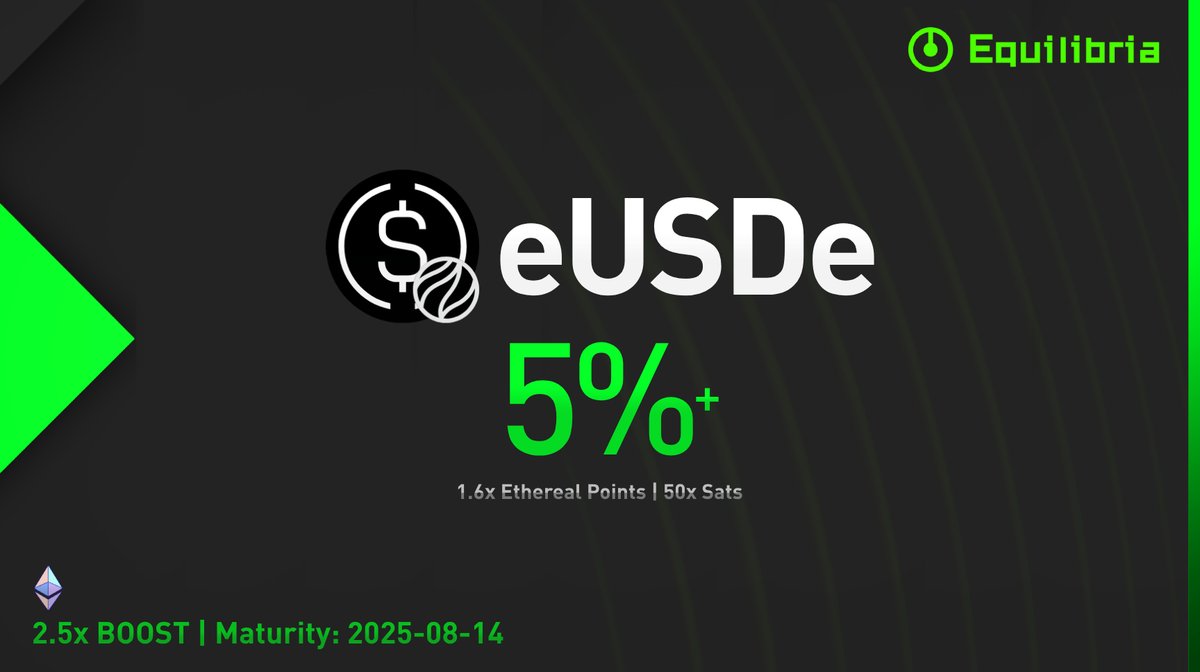

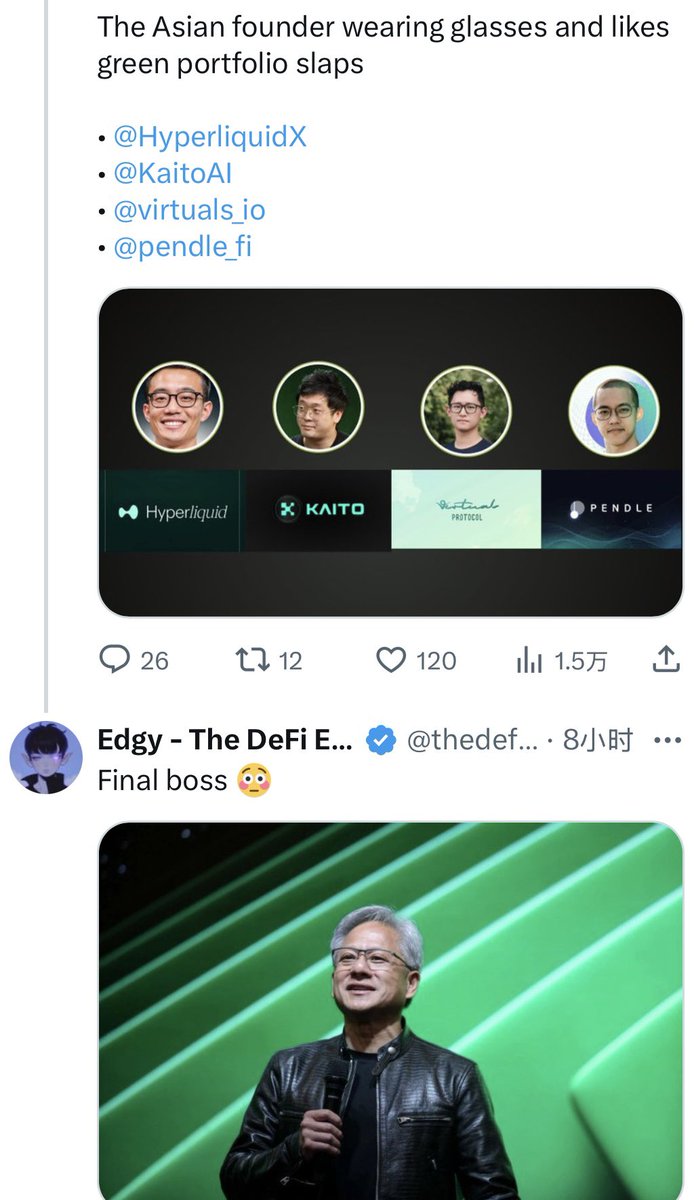






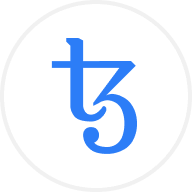








社媒平台热度